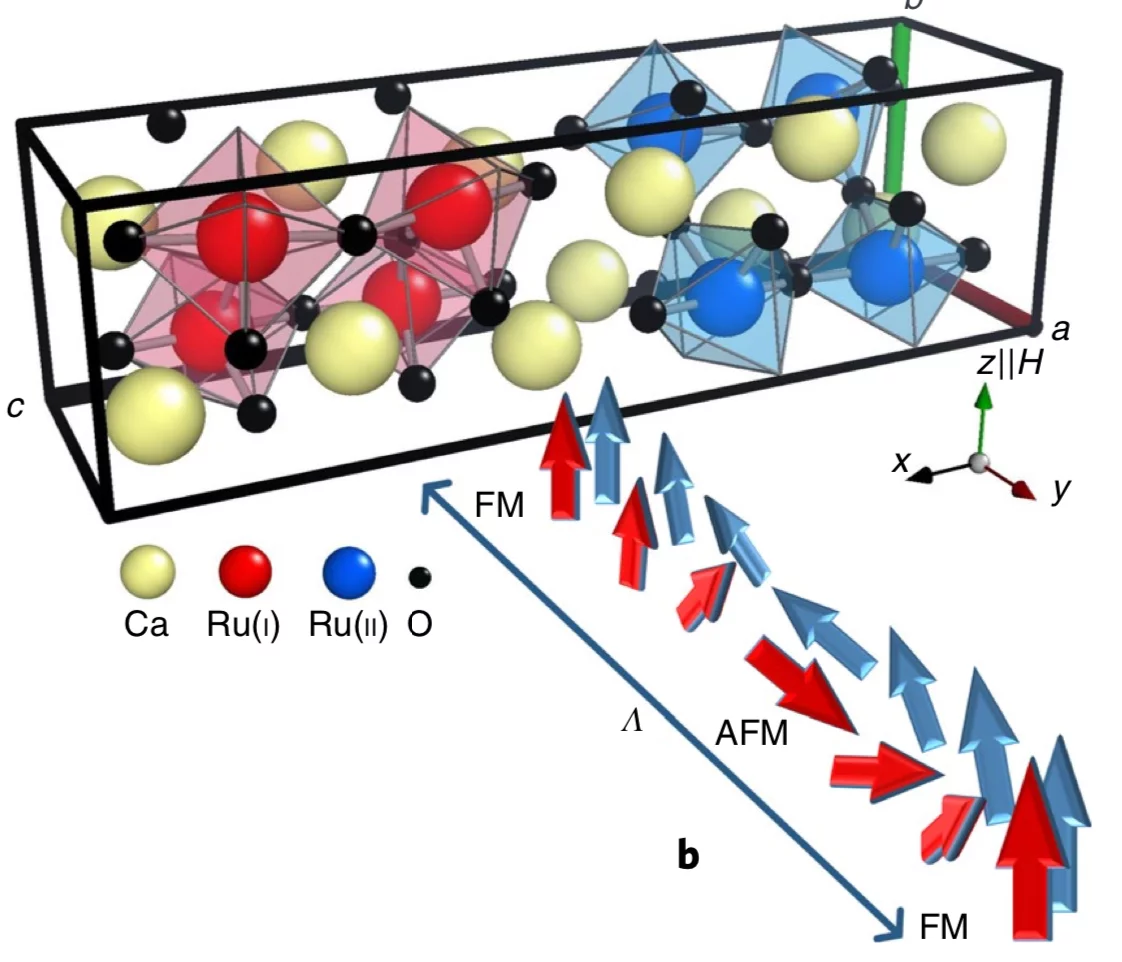The notion of a simple ordered state implies homogeneity. If the order is established by a broken symmetry, the elementary Landau theory of phase transitions shows that only one symmetry mode describes this state. At the exact points of phase coexistence, domain states composed of large regions of different phases can be stabilized by long-range interactions. In uni- axial antiferromagnets, so-called metamagnetism is an example of such behaviour where antiferromagnetic and field-induced, spin-polarized paramagnetic/ferromagnetic states coexist at a jump-like transition in the magnetic phase diagram. Here, by combining experiments with theoretical analysis, we show that a different type of mixed state between antiferromagnetism and ferromagnetism can be created in certain non-centrosymmetric materials. In small-angle neutron scattering experiments, we observe a field-driven spin state in the layered antiferromagnet Ca3Ru2O7, which is modulated on a scale between 8 and 20 nm and has both antiferromagnetic and ferromagnetic parts. We call this state a metamagnetic texture and attribute its appear- ance to the chiral twisting effects of the asymmetric Dzyaloshinskii–Moriya exchange. The observation can be understood as an extraordinary coexistence—in one thermodynamic state-of spin orders that belong to different symmetries. The complex nature of this metamagnetic state is demonstrated experimentally by measurements of anomalies in electronic transport that reflect the spin polarization in the metamagnetic texture; determination of the magnetic orbital moments, which support the existence of strong spin–orbit effects, is a pre-requisite for the mechanism of twisted magnetic states in this material. Our findings provide an example of a rich and largely unexplored class of textured states. Such textures mediate between different ordering modes near phase coexistence, and produce extremely rich phase diagrams.
Facility: SINQ
Reference: D.A. Sokolov et al, Nature Physics 15, 671 (2019)
Read full article: here



